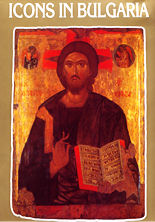- Американска и канадска художествена литература
- Антикварни книги
- Антични автори
- Балканска художествена литература
- Библиофилски издания
- Биология
- Българска художествена литература
- География, пътеводители
- Детска литература
- Европейска художествена литература
- Езикознание, лингвистика, семиотика, филология
- Езотерика, духовни учения
- Здравна и медицинска литература
- Земеделие и животновъдство
- Изкуство
- Икономическа литература
- История
- Календари, сувенири
- Компютърна литература
- Кулинарна литература
- Културология, етнология и фолклор
- Латиноамериканска художествена литература
- Литературна критика
- Литературна периодика
- Медии и комуникации
- Нобелова награда за литература
- Политология
- Правна литература
- Православна литература
- Психология
- Речници, справочници, енциклопедии
- Социология
- Спорт, хоби
- Точни науки, техника
- Учебна литература, Педагогика
- Философия
- Художествена литература от Азия, Африка и Австралия

Icons in Bulgaria
Продуктов номер: 21438Изчерпана
Автор: Теофана Матакиева Лилкова
Категория: Българска история на чужди езици | Православна литература
Издателство: Borina
Състояние: Нова книга
ISBN: 9545000406
255 страници
твърди корици
Първо издание: второ издание, 2002
Народност: българска
Това издание ви представя икони от Националния исторически музей в София, чиято колекция е подбрана от автора. Иконите са събирани в продължение на повече от 15 години от експедиции, дарения или просто са били закупени. Днес колекцията съдържа около 1000 икони, като повечето от тях са непознати за любителите на древното изкуство. BULGARIAN ICONS have millennial history. Under the reign of tsar Boris I, in 865, Bulgaria was the first of all Slav peoples to adopt Christianity from Byzantium as its official religion. Since then the icon, venerated as an especially sacred object of cult and rite, has developed as a fundamental part of the Bulgarian art from the ninth century through the present day. The First Bulgarian Kingdom extended its valuable contribution to the artistic achievements of Christian Orthodox culture by producing the oldest known Bulgarian icons, made of glazed ceramic tiles. The Second Bulgarian Kingdom left its lucent mark with the works of the Tarnovo School of Painting, swayed by the Golden Age of the Bulgarian literature, the literary reform of Patriarch Euthymius and the philosophy of the Hesychasts. In 1393 the Bulgarian State was destroyed and its lands were included within the borders of the vast Ottoman Empire to remain there up till 1878. Over these years of alien national and religious domination, the icon proved to be a unique transcedental link with the cultural traditions of the past, with the sublimity of the Middle Ages, with the Mount Athos. To the enslaved Balkan and Christian peoples religion was a major consolidating factor for their survival against the assimilative policy of the oppressors. The eighteenth century marked the beginning of the Bulgarian Renaissance. Prosperous Bulgarian towns and regions such as Tryavna, Bansko, Samokov and Strandzha became the home of national schools of arts which were to bring up several generations of artists with a distinct style of their own. During the Bulgarian Renaissance period, the strictly didactic and rigidly canonized painting had been transformed into life-asserting art. The Bulgarian icon served the noble cause at the redemption, revival and triumph of the nation. The Bulgarian icon painters had left their deep mark in the overall development of Christian Orthodox Art. Their trail can be seen in the monasteries of Mount Athos and the south-west Balkans, or in Wallachia, Moldavia and Russia, whose icon masters had followed the Bulgarian canonical pattern. An outstanding achievement of a small but extremely gifted nation, of its refined sensibility and artistic taste, the Bulgarian icon occupies a well-deserved place in the cultural history of Europe.